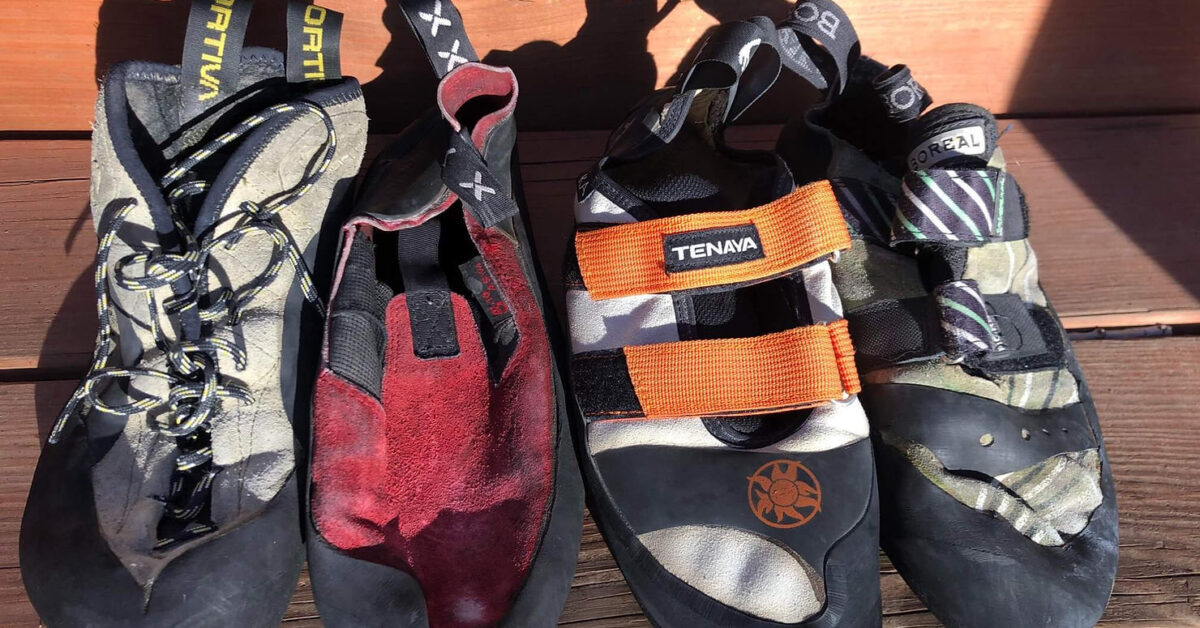
You’ve gone to the climbing gym with some friends and loved it. You’re hooked and can’t get enough.
Where do you start?
Buying rock climbing gear can be as clear as a puddle of mud. Seriously, with all the different manufacturers and types of gear, it can be a little overwhelming.
If you’re looking for help in deciding what climbing gear to purchase, look no further. We’ve compiled a short list of the basics you need to rock climb (indoors or outdoors) with friends.
It’s a common misconception that rock climbing shoes need to be tight and uncomfortable.
If you’re feet are crammed into a shoe that’s too small and screaming at you, climbing won’t be fun.
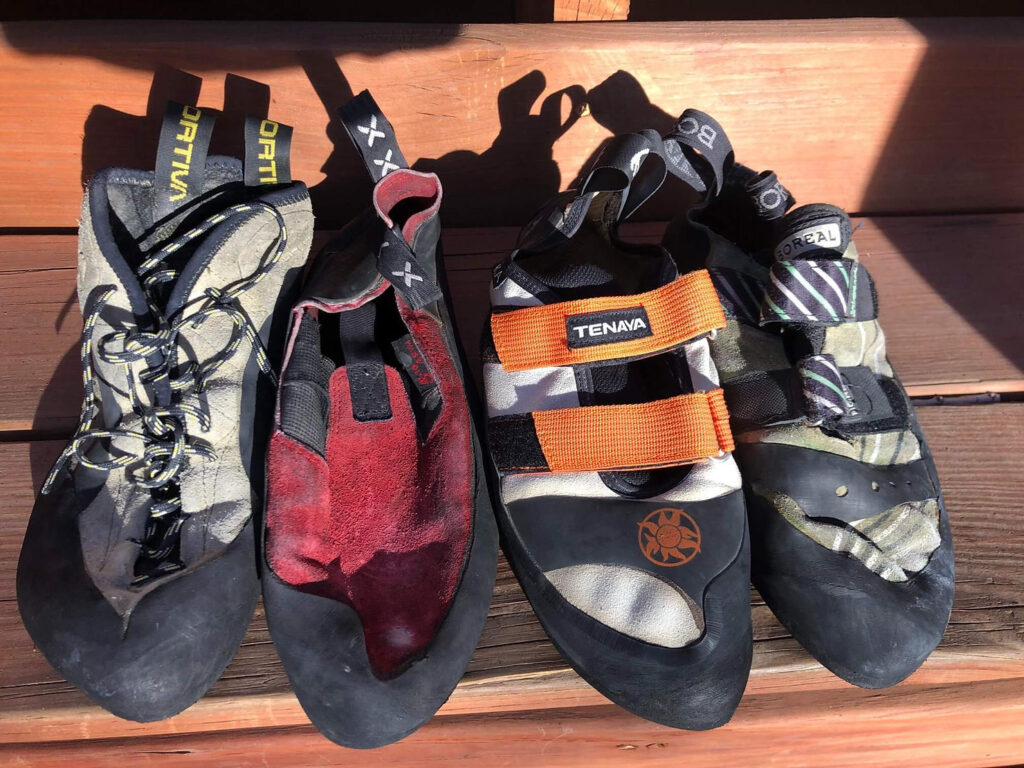
A good selection of leather versus synthetic shoes
When purchasing climbing shoes, we always like to suggest people start with their shoe size and err on the side of comfort. Size up or down from there.
Find a shoe that fits your foot with your toes touching the front of the shoe but not contorted and folded in half.
There’s no need for your toes to be crunched and curled unless you’re climbing 5.13’s!
As you look for shoes that are comfortable, keep in mind that climbing shoes are made with different materials. Full leather shoes will stretch one half to one full size after about 30 pitches of climbing. Synthetic shoes do not stretch and tend to hold onto odors: in this case, your foot.
Try on lots of different shoes.
Many shops have a small climbing wall where you can see how different shoes interact with the wall while on your feet. Don’t be afraid to hang out in them for a little while to make sure they are the right pair for you.
Our absolute favorite climbing shoe out there currently for first time shoe buyers is the Scarpa Origin.
Bottom Line: find a climbing shoe that is comfortable and snug, but not to the point of discomfort.
A climbing harness is a biggie, unless you’re planning on only bouldering.
It’s important to note there are many different types of climbing harnesses. For example, a mountaineering harness can be used for rock climbing, however, it’s going to be the world’s most uncomfortable harness.
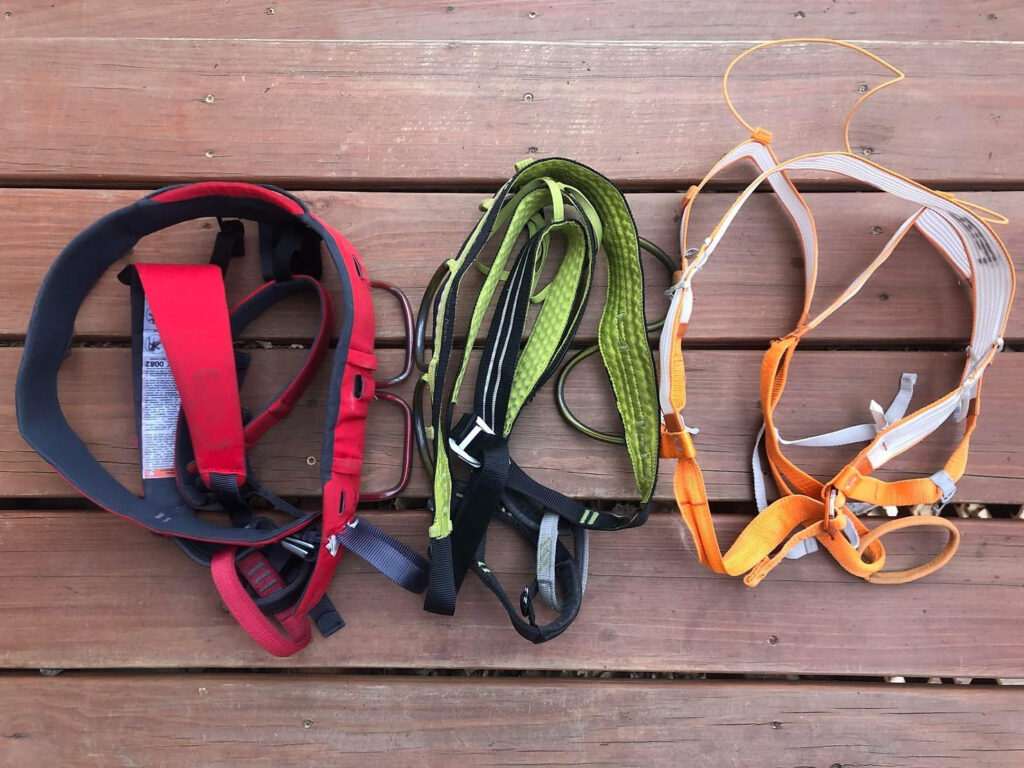
Left to Right: a rock climbing specific harness, an ice climbing harness, and a ski/mountaineering harness
Find a rock climbing specific harness. An easy way to tell what this looks like is: lots of foam padding in both the waist belt and leg loops.
Many gear shops and stores have a rope hanging from the ceiling where you can clip in and hang from a harness. Hang there for a few minutes and see if any hot spots develop.
A few of our favorite harnesses out there currently are: CAMP Energy CR 4, Black Diamond Momentum, and the Petzl SAMA.
Bottom Line: find a climbing harness that fits on your hips correctly and is appropriate for the type of climbing you will be doing.
If you’re planning on climbing outside, a helmet is a must.
This should be specific to climbing and not a bike helmet, ski helmet, hardhat, or any other type of helmet (yes we see these types of helmets all the time at the local crag!)
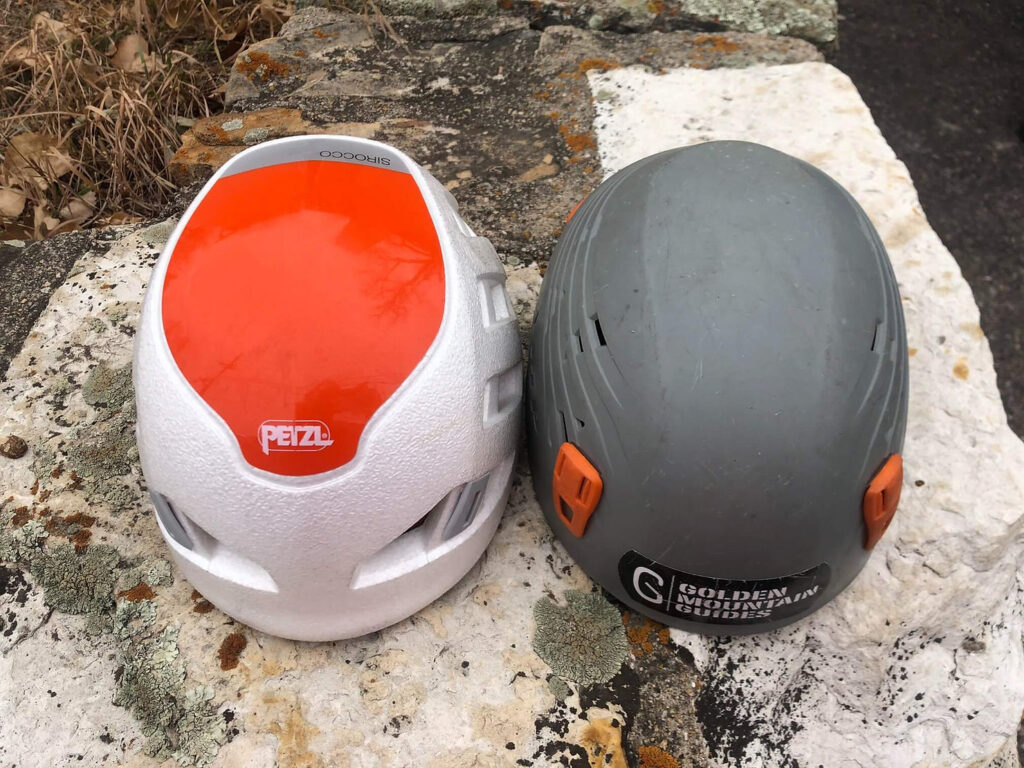
A softshell versus hardshell helmet. Hardshells tend to last longer but are heavier
Climbing helmets are constructed out of high grade expanded polystyrene (EPS) foam and may or may not have some sort of hardshell material protecting it.
Hardshell helmets generally hold up to more abuse, but are heavier. Softshell helmets are super lightweight but tend to be less durable.
Climbing helmets are designed to protect us from falling rocks more so than side impacts.
Bottom Line: if you’re planning on climbing outdoors, this is a must.
Hmm…how to choose a belay device?
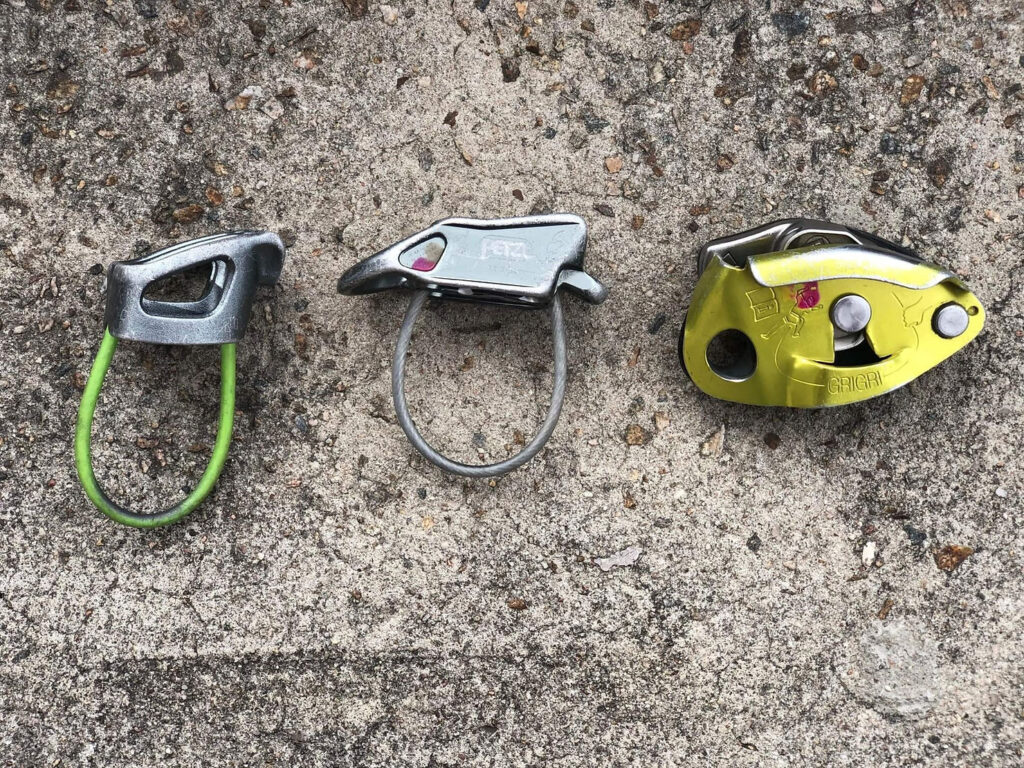
There are many different types of belay devices on the market, but they all do one thing: stop a falling climber.
You may be asking yourself what the differences are?
We can split belay devices into two categories: assisted braking devices and manual braking devices.
Assisted braking devices such as the Petzl GriGri, Trango Cinch, Edelrid Mega Jul make it easier to catch a falling climber. They either utilize a mechanical “camming” action, or a pinching motion to help arrest a fall.
Manual braking devices such as Black Diamond’s ATC or DMM’s Pivot utilize only the friction of you holding the rope to arrest a fall.
So which belay device is right for you?
If you are planning on solely climbing indoors, then check out an assisted braking device. If you’re planning to climb outdoors, then a manual braking device is worth its weight in gold.
Many climbers like to have both styles of belay device depending on whether they are just cragging or planning to climb a big multipitch route.
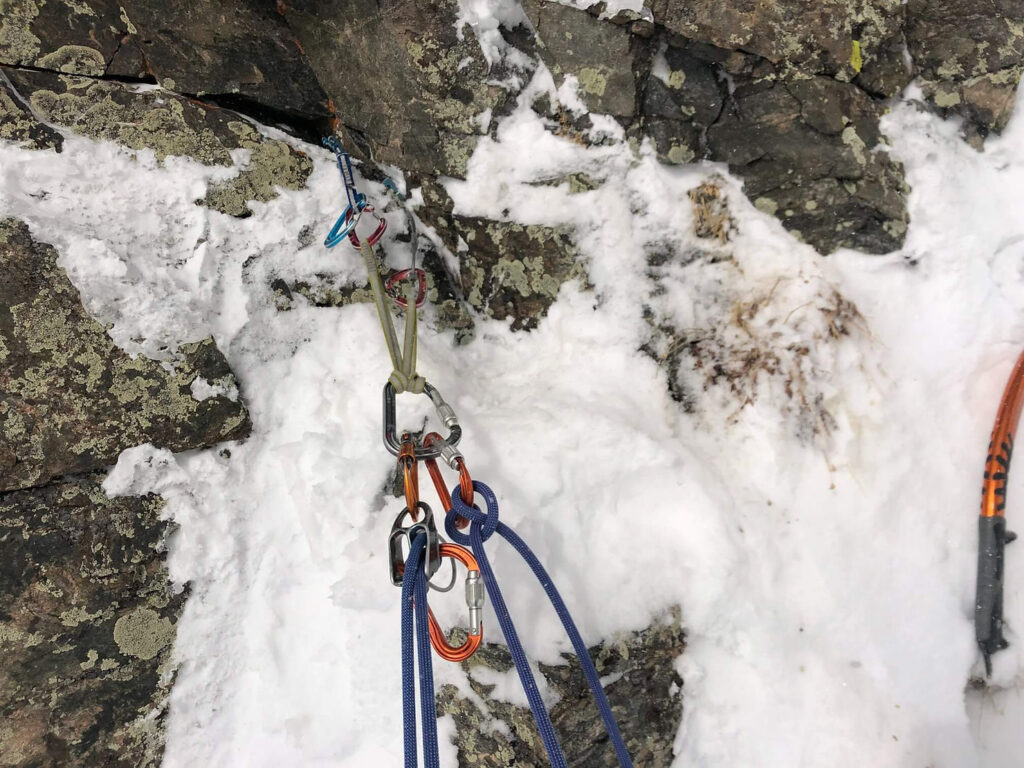
Some belay devices make it easy to belay a follower from the top in “self locking” mode or “guide” mode
Remember that no matter which belay you choose, you must keep your hand on the brake at all times. There is no such thing as a hands free belay device!
Bottom Line: It’s nice to have the right tool for the job. There’s nothing better than a GriGri for a day out cragging. On the flip side, a good old fashioned belay device for multipitch climbing is a necessity.
There are so many different types of carabiners. How do I choose the right one?
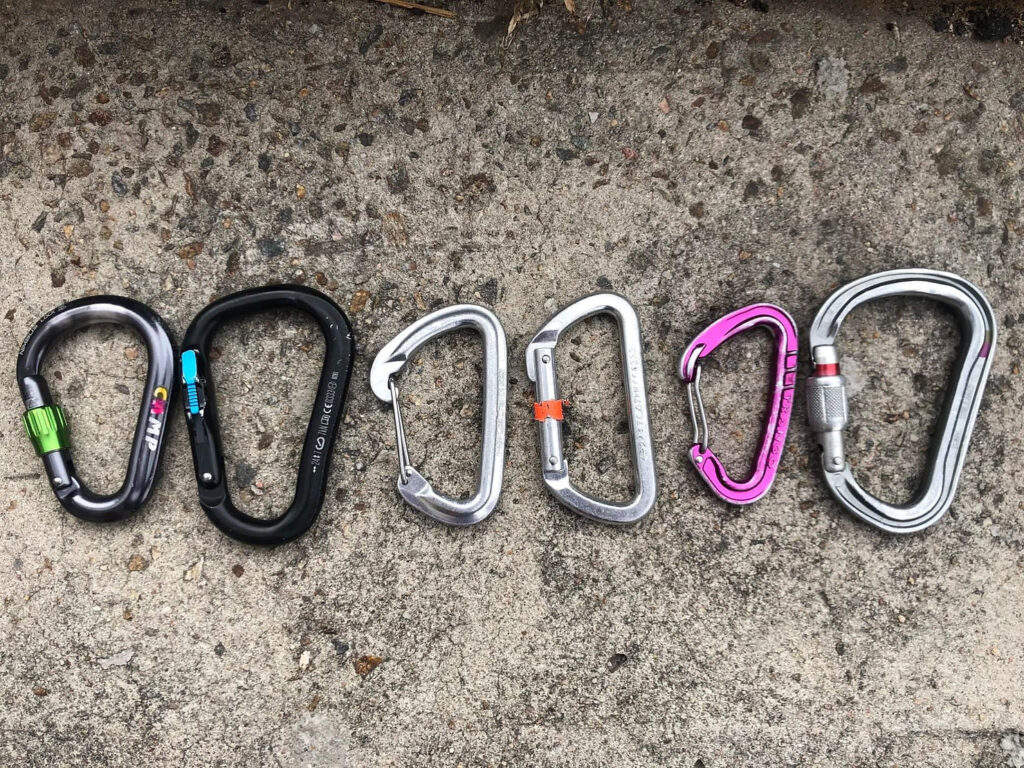
Do I choose a locker or a non-locker?
Locking carabiners versus non-locking carabiners
Carabiners come in many different shapes and sizes, but can always be broken down into locking and non-locking.
We use locking carabiners to connect a belay device to our harness, set up a top rope, or attach ourselves to an anchor.
We use non locking carabiners to connect gear to our harness, and to clip the rope into while lead climbing.
Think of it this way: use a locker any time an open carabiner gate could lead to a catastrophic failure of the system.
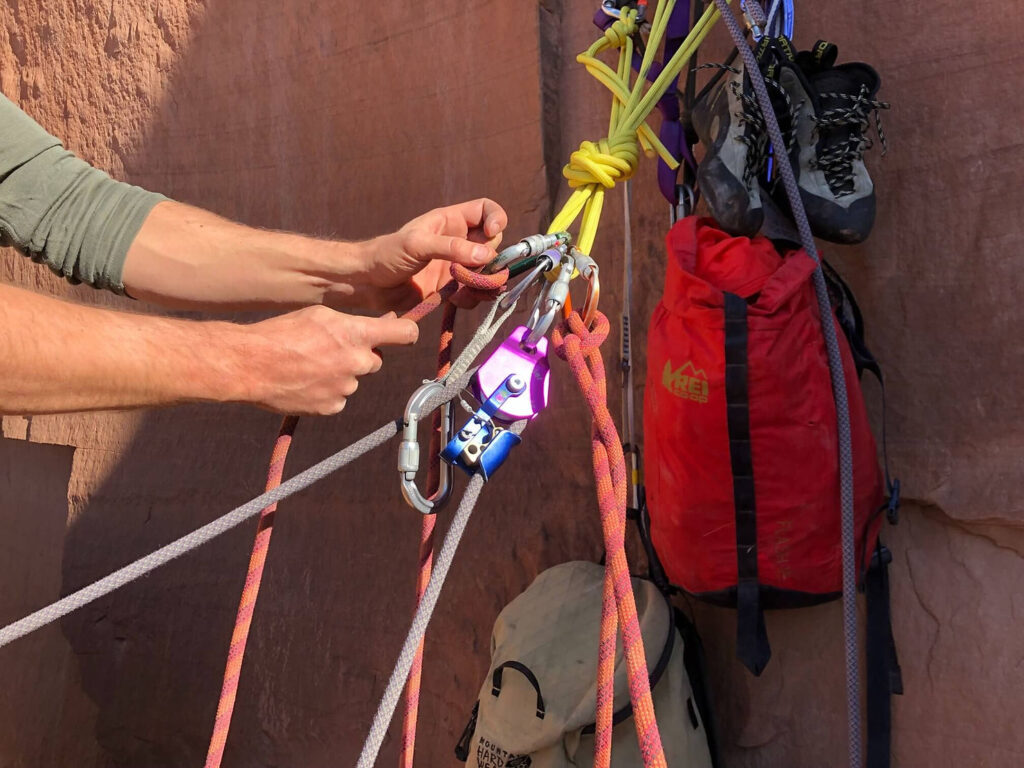
Locking carabiners are always used to connect ourselves to both anchors and belay devices
When looking to purchase carabiners as a newer climber, always think about what you plan to use it for. For many people just starting off, one locking carabiner is perfect.
The best carabiners out there for belaying with are considered HMS carabiners or roundstock carabiners. These look like pears and have a lot of space within the basket of the carabiner for the rope to move through. Many are screw gates, or utilize a screwing motion to close and “lock” the carabiner.
Some of our favorite carabiners out there currently are: CAMP Nimbus Lock, Petzl Attache, and Black Diamond RockLock Magnetron.
When you’re ready to buy: Go to your local gear shop and play around with tons of different carabiners. Play with the gates and see if opening it is easy for you. Does it feel good in your hand?
There’s nothing worse than buying one and never using it!
Bottom Line: If you’re only going to purchase one carabiner, make sure it’s a locker for your belay device.
When starting your climbing kit purchases, these are the basics you need to kick start your climbing lifestyle!
As always, make sure you practice safe climbing techniques. The best place to learn is through an AMGA certified guide in a privately guided day or a class!
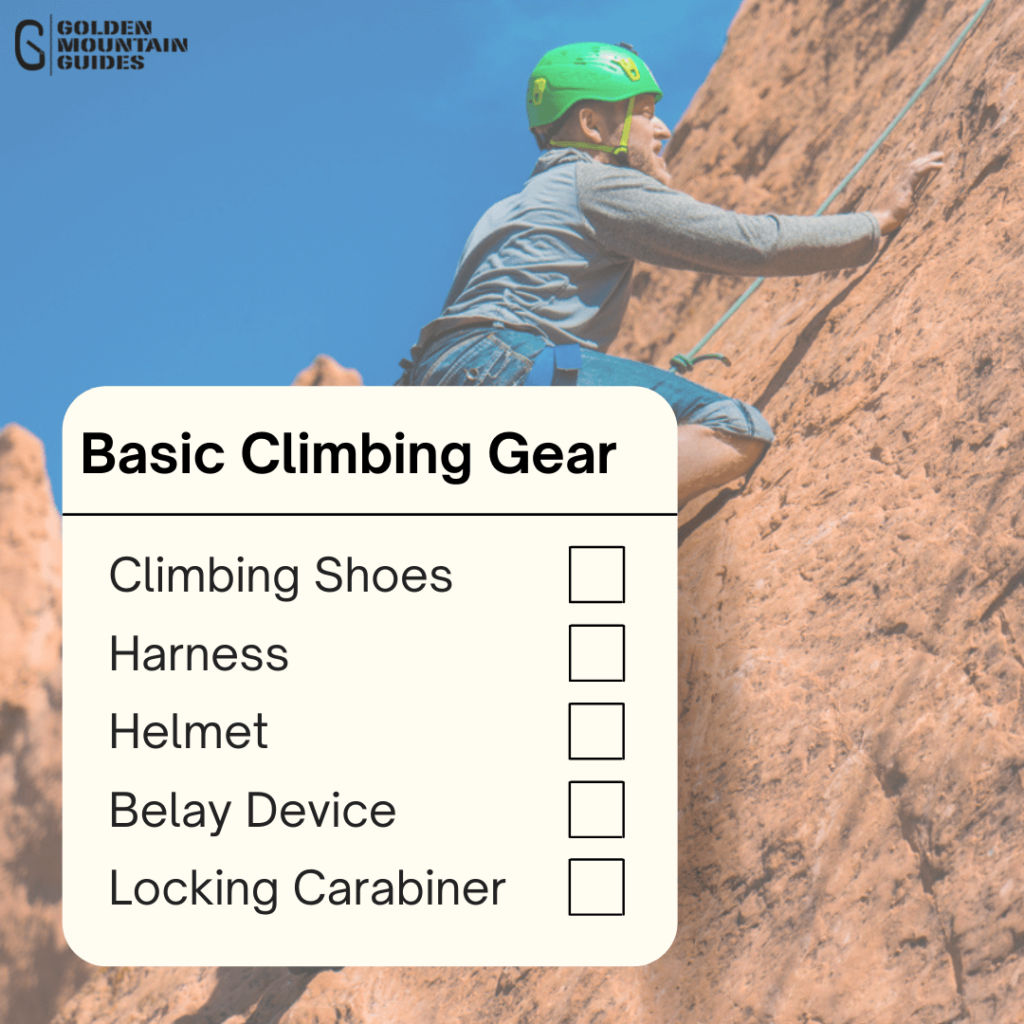



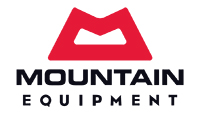
Content Copyright © 2025 of Golden Mountain Guides. All rights reserved. | Privacy Policy | Site Map